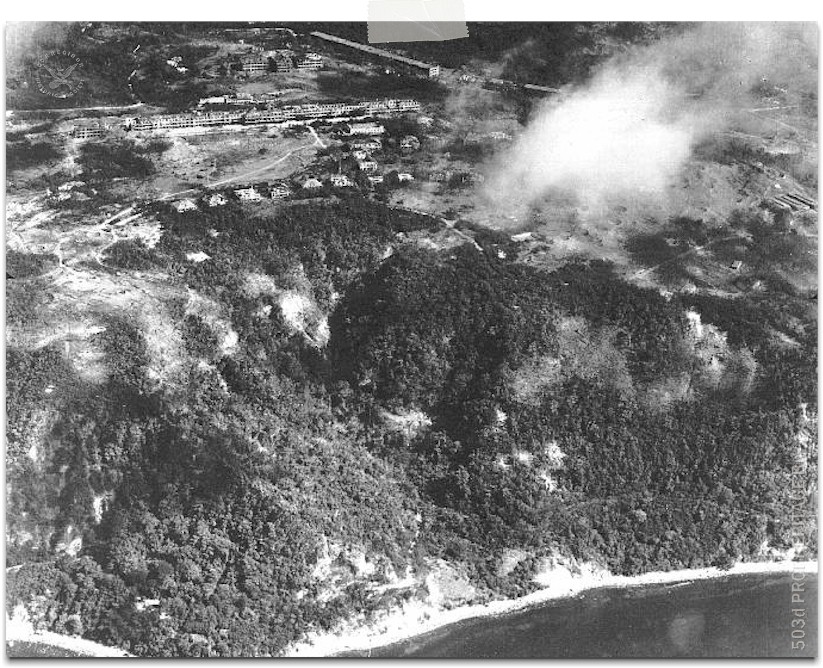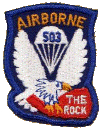|

Jump field B
[the golf course] is on the right where the wisp of a cloud
obscures it. The shot is obviously taken before the assault
since there are no chutes in the ravine and many of the
paratroopers going into B field were blown into the ravine.
The first wave had more trouble than the second since we [I
was in the 2nd wave] were briefed by the pilots before we
took off and the count past the GO point was changed to
seven seconds. My entire platoon landed right on the money
but one D Company planeload [mainly the 3rd] dropped into
the ravine. As we used to say "There's always the ten
percent who don't get the word." The buildings at the edge
of the ravine [midground] are officers quarters, A field and
the barracks are at the top of the photo. Fred Hill was a
member of the reconnaissance squadron that supported us and
his team developed and printed the photos that were provided
the troops and were most useful on the assault since the
maps were terrible. I have ordered several prints from Hill
and I highly recommend him, he does excellent work and gets
it done in a reasonable time.
John Lindgren
"D" Co., 503D PRCT

"I jumped in the
first wave, and missed the topside by about 50 meters. While
getting rid of my parachute I saw my company commander,
Capt. James S. Beyer, struggling up the slope. Together we
labored up to the topside. We had not gone too far on top
when we saw a body partially covered with a parachute. The
parachute had failed to open. Captain Beyer peeled the
canopy from the fallen soldiers face to reveal the
unfortunate death of my platoon sergeant Charles Lindsay. We
covered his body with the chute, looked wonderingly at each
other, murmured a silent prayer, and proceeded with the
mission."
Bob Flynn
503rd Historian
(and 161st Parachute Engr. Co.)
|
![]()